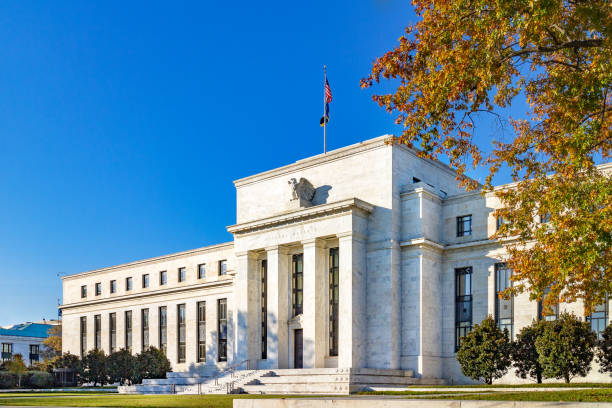
As we approach the conclusion of the Federal Reserve‘s two-day policy meeting this Wednesday, the financial world watches closely. With interest rates at a 22-year peak of 5.25% to 5.5% since last July, the anticipation builds around the Federal Open Market Committee’s (FOMC) next move. Set against a backdrop of recent economic developments, this meeting is pivotal in determining the course of U.S. monetary policy amidst changing inflation dynamics and a robust labor market.
The FOMC’s Deliberations: A Balancing Act
The Federal Reserve, under the guidance of Chair Jerome Powell, is at a crucial juncture. With inflation showing signs of easing and the economy displaying resilience, the central bank’s decision-making process involves a delicate balance. The FOMC’s rate decision, due at 2 pm in Washington, followed by Powell’s press conference, is highly anticipated by investors and economists alike.
Investor sentiment, as gauged by market probabilities, leans towards a 40% chance of a rate cut in March, a significant move that would mark the first reduction in nearly eight months. However, Federal Reserve officials, including Powell, have maintained a cautious stance, emphasizing the premature nature of discussions on rate cuts.
Inflation and Economic Growth: Signs of Progress
Recent data underscores a noteworthy decline in inflation, with the Fed’s preferred gauge of underlying inflation cooling to a near three-year low in December. This deceleration, especially in core measures excluding volatile food and energy prices, suggests a gradual alignment towards the Fed’s 2% target. Such trends provide a backdrop for the FOMC’s considerations, balancing optimism with a measured approach to monetary policy adjustments.
Policy Guidance and Market Expectations
The upcoming FOMC statement is likely to reflect these economic undercurrents. Speculation abounds regarding potential adjustments in the committee’s guidance on interest rates, with possibilities ranging from maintaining the current stance to subtly shifting towards a more neutral policy outlook. The essence of the Fed’s communication will be to manage market expectations without committing to a predefined path, allowing flexibility in response to evolving economic indicators.
Powell’s Press Conference: A Forum for Clarity
Chair Powell’s press conference will be a focal point for clarity on the Fed’s perspective on a range of issues, from the possibility of rate cuts to the assessment of economic risks. With the market’s anticipation of rate reductions diverging from the Fed’s more cautious median forecast, Powell’s responses will be pivotal in shaping perceptions of the Federal Reserve’s future direction.
The dialogue may also touch upon broader banking concerns, including strategies to encourage lending and maintain liquidity in the banking system. These discussions are crucial in understanding the Fed’s approach to ensuring financial stability while navigating monetary tightening.
The Fed’s Balance Sheet and Quantitative Tightening
Another critical aspect of the Fed’s deliberations involves its substantial balance sheet and the ongoing quantitative tightening program. With the balance sheet standing at approximately $7.7 trillion, the strategy for managing this portfolio amid market liquidity considerations will be under review. While an immediate decision on tapering the tightening program is unlikely, the discussions will provide insights into the Fed’s long-term strategy for monetary policy normalization.
New Voters and Policy Perspectives
The January meeting introduces a new rotation of voting members among the regional Federal Reserve bank presidents. This change brings fresh perspectives to the committee’s deliberations, potentially influencing the balance of opinions on the appropriate pace and direction of monetary policy adjustments.
As the Federal Reserve concludes its policy meeting, the financial community awaits decisions that will shape the trajectory of U.S. monetary policy in the coming months. With inflation easing and the economy showing signs of strength, the Fed’s actions and communications will be crucial in navigating the delicate balance between fostering economic growth and maintaining price stability. As we stand at this juncture, the path forward requires a nuanced understanding of economic indicators, policy implications, and the global financial landscape.
In a world of uncertainties, the Federal Reserve’s policy decisions remain a beacon for markets, guiding expectations and investments in an ever-evolving economic environment. The outcome of this meeting will not only reflect the current economic assessment but also set the tone for monetary policy in the near term.
Featured image credit: Tanarch via Getty Images
